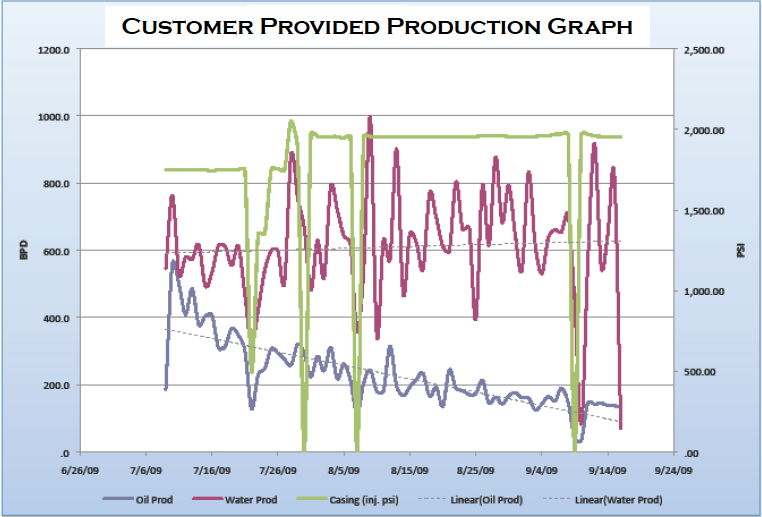The high-performance, high-reliability choice for artificial lift.
What is the ULTRA-FLOW System?
JJ Tech’s ULTRA-FLOW System is an advanced, reliable and durable artificial lift solution. It pairs two proven technologies to provide a surface/downhole pumping solution that outperforms other artificial lift solutions, vastly reducing the need for costly workovers and associated well downtime. ULTRA-FLOW is designed to perform in all stages of a wells production life, in both initial artificial lift installations and to replace less effective artificial lift methods that demand excessive workovers.
The ULTRA-FLOW System is an artificial lift technology stack that combines our SELECT-JET downhole Jet Pump, powered from the surface by a Hydra-Cell® Pro seal-less positive displacement diaphragm pump from Wanner Engineering.
The important characteristics of ULTRA-FLOW are simplicity, reliability, and flexibility. Our patented technology (US PAT. 7,255,175) can be used in all stages of a well’s production life. Since the downhole pump has no moving parts and can be reverse circulated to the surface, the ULTRA-FLOW System is the best choice for initial flowback, wells that are “frac-hit” and need rapid fluid recovery, and most importantly, wells that are plagued by unnecessary workover costs.
INITIAL ARTIFICIAL LIFT INSTALLATIONS
Start Strong with ULTRA-FLOW
Ultra-Flow is the most reliable, longest lasting system for initial artificial lift installations, when sustained production is most critical, and downtime is not an option.
Why Start with ULTRA-FLOW?
Starting your well with the ULTRA-FLOW System.
- Installation is faster, easier and therefore less expensive than ESP
- Rate of production is easily controlled
- Handles produced sand through the downhole pump that would cause ESPs to fail
- ULTRA-FLOW can be used to size your permanent form of artificial lift
EXISTING ARTIFICIAL LIFT INSTALLATIONS
Make the Switch to ULTRA-FLOW
Replace rod pumps and ESPs with a more reliable form of artificial lift. ULTRA-FLOW Systems handle solids, corrosives, and are unaffected by deviated wellbores.
Why Switch to ULTRA-FLOW?
Reduce excessive workovers and associated downtime required by inferior artificial lift systems.
- Maintain operations and efficiency for longer durations
- Replace rod pumps and ESPs with a more reliable artificial lift technology
- The best solution for frac-hit wells and those plagued by excessive workovers
Key Features and Benefits
- No moving parts downhole
- Sand / Solids production is excellent
- Pump can be hydraulicly retrieved
- High performance in deviated wells
- No mechanical connection to Jet Pump
- Produced water/oil powers the Jet Pump
- Wide range of production volumes
- Production volume is determined by injection rate / pressure
- Control production volume at the surface with VFD
- Versatility of Jet Pump installation possibilities are endless
- Temporary or permanent installations
- Hydra-Cell Pro diaphragm pumps costs less to operate than a conventional triplex plunger pump and are far more efficient than a multistage centrifugal pump (H-Pump)
Mitigate Workover Costs
Simply by reducing the number of workovers required, total costs can be slashed and productivity savings can be realized that far exceed the difference between the ULTRA-FLOW System and lower-cost, but less effective, artificial lift methods including:
- Mobilizing a workover rig including rental or operational costs of the rig
- Labor costs including engineers, rig operators and specialized technicians
- Materials and equipment costs for casing, tubing, specialized tools and equipment required for specific workover tasks such as milling tools and fishing tools, etc.
- Fluid costs such as drilling mud, completion fluids, or stimulation fluids
- Costs of transportation and logistics of the equipment and personnel
- Other costs and contingencies including pre- and post-workover testing, permitting and regulatory compliance, inspections, and post-workover modifications and repairs
- Most significantly, downtime and production losses during a workover
Related Case Studies

How the ULTRA-FLOW System Slashed Deviated Well Costs
TALK TO AN EXPERT
Our team of experts specialize in resolving your challenging oil and gas well production problems. Talk to JJ Tech about analyzing your well at no cost and let us show you how we can help optimize your well production and lower your operating costs.
